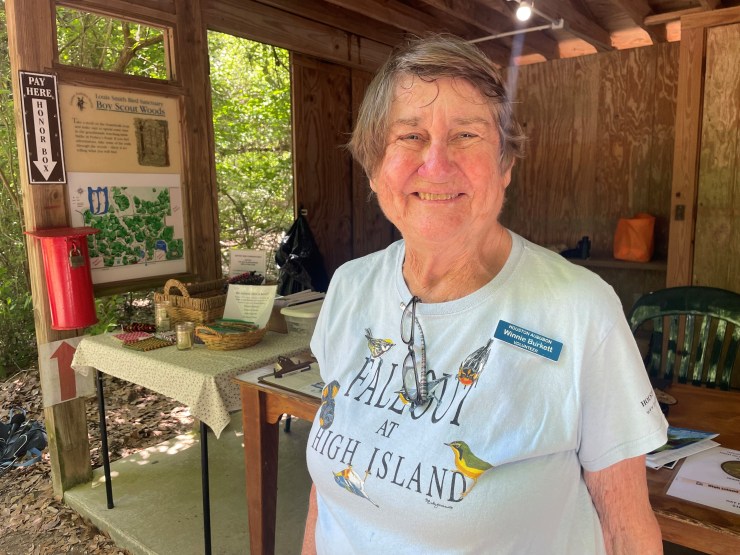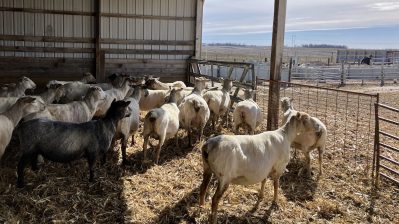
Millions more Americans travel to bird-watch. Texas businesses are cashing in.
Millions more Americans travel to bird-watch. Texas businesses are cashing in.

Thousands of bird-watchers descend on the Texas Gulf Coast each spring, traveling from far-flung places like Bogota, Colombia, and Olympia, Washington, to catch a glimpse of migrating warblers or nesting waterfowl and other birds that concentrate in local sanctuaries.
And where the birds go, the tourism dollars follow, as birding becomes an increasingly popular outdoor hobby in the United States.
Some 43 million people traveled to bird-watch in 2022, up from 18 million in 2011, according to the U.S. Fish and Wildlife Service. In that time, spending on wildlife watching — which is majority birding — nearly quintupled to roughly $250 billion.
And that spending plays out in communities across the country, but especially in Texas during spring migration, when a third of all migratory birds destined for the United States pass through the Lone Star State on their journey north.

About 80 miles southeast of Houston, in the small, unincorporated community of High Island along the Bolivar Peninsula, 7,000 to 10,000 birders visit each April, according to the Houston Audubon.
High Island and its four Audubon-owned bird sanctuaries are a destination, thanks to the concentration of birds that stop there to eat and rest after their journey from the Yucatan Peninsula, said local bird expert Winnie Burkett.
“They leave at dusk and they fly across the Gulf of Mexico, and they get in 18 hours later on average,” she said. Depending on weather conditions, often birds will stop in High Island after their flight.
“And that’s why bird-watchers come, because this can be a place that you can see all the Eastern warblers, 20-some odd species of warblers, which people really like to see,” she said. “And you can see painted buntings and indigo buntings, and you can see tanagers and orioles.”
People come from all over the country and the world to see the migrating birds, which has been a boon to local businesses as people spend on food and accommodations in High Island or nearby in towns like Winnie or on the Bolivar Peninsula.
“We have a motel [in High Island]. They’ve just redone most of the rooms,” Burkett said. “It stays pretty full in April.”
She said it can make a big difference for the small-town restaurants and motels near and along the coast to have birders visit before peak season in the summer.
For Priya Fernandes, who manages the High Island Mart gas station, one of the few local businesses in High Island, hungry birders boost spring sales, coming in to buy snacks like chips, soda and sandwiches — and bug spray.
“From the middle of March, I see birders around,” she said. “We start picking up business with the bird-watchers walking in, and slowly with the summer, we go up.”
She can spot birders by their distinctive markings: khaki pants and hats.
But birders don’t just need provisions — they also need their gear.
“There aren’t a lot of places to try binoculars before you buy them,” said Chris Hysinger, owner of Houston-based optics business Land Sea & Sky. His team sets up shop in High Island each April so customers can test out binoculars while they’re birding.
Hysinger scoped out birders as a target market when he bought the business eight years ago.

“We really went after a lot of the bird festivals. So whereas in 2016, we were only going to one festival each year in Texas, now we go to [roughly] seven festivals in Texas,” he said.
In that time, he said birding gear went from about 10% of his store’s revenue to 50%.
Major retailers also recognize the economic opportunities of bird-watching. The Outdoor Industry Association identified birding as one of the activities with the highest average annual growth rate from 2020 to 2022 — up nearly 20%.
Birding tourism can also bring money into less-traveled parts of the country. A Texas A&M study from 2011 found that bird-watching and other nature tourism in the Rio Grande Valley contributed $266.6 million to gross regional product. Another study from Alaska showed how rural communities benefited from bird-watching — an estimated 300,000 bird-watchers visited the state in 2016, supporting 4,000 jobs.
In High Island, while some birders may stay a night or two at a nearby hotel or Airbnb, many retirees will come for longer stints in their recreational vehicles.
Judy Dobler, from Spokane, Washington, is spending the entire month at the bird sanctuaries.
“I came here as a tourist last year. And this year, I’m here for the month of April as a volunteer,” she said.
For Dobler, birding is not simply a hobby, but a way of life.
She’s traveled from Port Aransas, Texas, to the Gulf Coast in Florida in search of great birding, community and warm weather. In High Island, she’s a particular fan of the rookery.
“Everything big is nesting there,” she said. “You can see them all easily and see the birds turning their eggs and the egrets hatching. It’s just cool.”
There’s a lot happening in the world. Through it all, Marketplace is here for you.
You rely on Marketplace to break down the world’s events and tell you how it affects you in a fact-based, approachable way. We rely on your financial support to keep making that possible.
Your donation today powers the independent journalism that you rely on. For just $5/month, you can help sustain Marketplace so we can keep reporting on the things that matter to you.

















